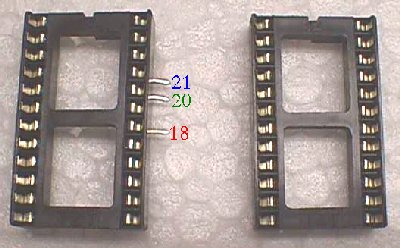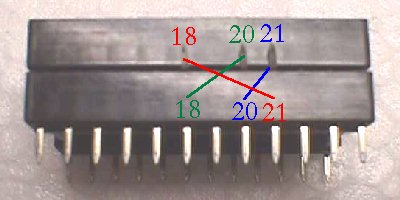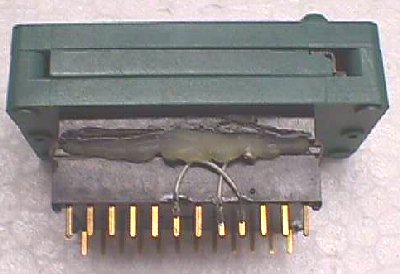|
Now that eprom programmers these days are so inexpensive I see that many hobbyist have them. One of the oft asked questions I hear is, "Can I check my Ms Pac roms with my programmer even though it does not support or have the 2532 or 9332 roms listed?".
Well... if all you want to do is check them to be sure they are good & not the source of any problem you may be having with your Ms Pac bd it can be done on most programmers via the 2732 option. All this can do is read in a checksum for you & as long as you have a known set of good checksums read in via the 2732 to compare to, you'll be able to verify the chips as good or bad. I'll put a good set checksum list below for easy access. | |||
| Letter | Position | 2532-9332 | 2732 Chksum |
| A | 6E | $F400 | $89FE |
| B Normal | 6F | $B100 | $D706 |
| B Fast | 6F | $B100 | $D706 |
| C | 6H | $9A00 | $66AC |
| D | 6J | $A20C | $F784 |
| E | 5E | $D972 | $E11C |
| F | 5F | $A4B8 | $201E |
|
Another thing that you can do, that I have been hesitant to post here, is make an adaptor. I've explained this probably a hundred times in email to start-up shops over the past eleven years, to experienced electronics people, but I didn't want be the cause of a hobbyist smoking their programmer. With so many of the newer programmers out there that do not support the 2532 I've decided to put one of the simpler ways here with the disclaimer that you use this information at your own risk. Back in the crossover days of hard wired coin-op machines to electronic, I had to make adaptors for just about everything & soon discovered that there are many different ways to build a basic rerouter. In the case of the 2532 I built adaptors from elaborate ones on perf board with LEDs to expensive PCB types to just simple double socket ones that could actually be used on-board to sub 2532-2732 or vice versa. These simple ones were the ones most often used with the various programmers over the years, but with the use of a zero insertion force (ZIF) socket due to their frequent use. This is the one I'll go with since there is much less chance of an electrical snafu. Basically, all that needs to be done is to redirect 3 lines... simple enough & I'll see if I can't make one of my great artistic attempts at an explanatory drawing to show the redirection here.
All you need for parts to build this is a couple 24 position IC sockets & a 24 pos ZIF socket.... how complicated can it be? Take your top socket & bend the legs of pins 18, 20 & 21 out 90 degrees.
Insert the top socket into the bottom socket pin for pin.
Now use wirewrap wire to redirect the pins as pic'd soldering as close to the body of the lower socket as you can. This socket will plug into the programmer socket, so you need to keep solder as high & as minimal as possible.
Insert your double socket in your programmer for stability & then plug your ZIF socket into the top where it will reside permanently. Take it for a test spin to see if you get a good cksum on a 2532 or 9332. If all is working okay then I usually seam it all up with hot glue to be sure it doesn't come apart. Your finish product should look something like this.
The one above was built in 1987 & still works fine after all these years, so longevity should not be an issue with normal precautions in storing when not in use. I just pop them into styro & rubber band them. The rubber bands don't seem to hold up like they use to & have to be replaced often or they will break :-( On another note, I keep hearing that 2532 eproms are no longer available or hard to find. That's been the rumor about town for ...jeez...20 years, or so. I've not seen a shortage of suppliers for the 2532 & have thousands of them on hand myself. Happy Gaming.... | |||




